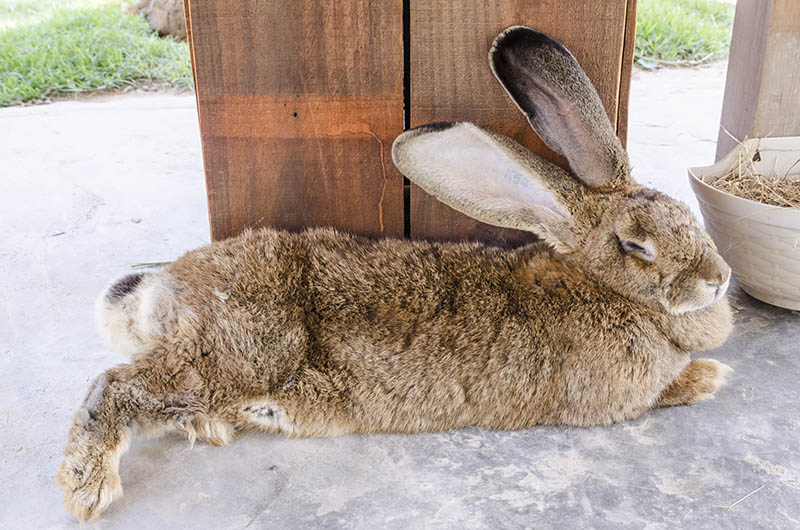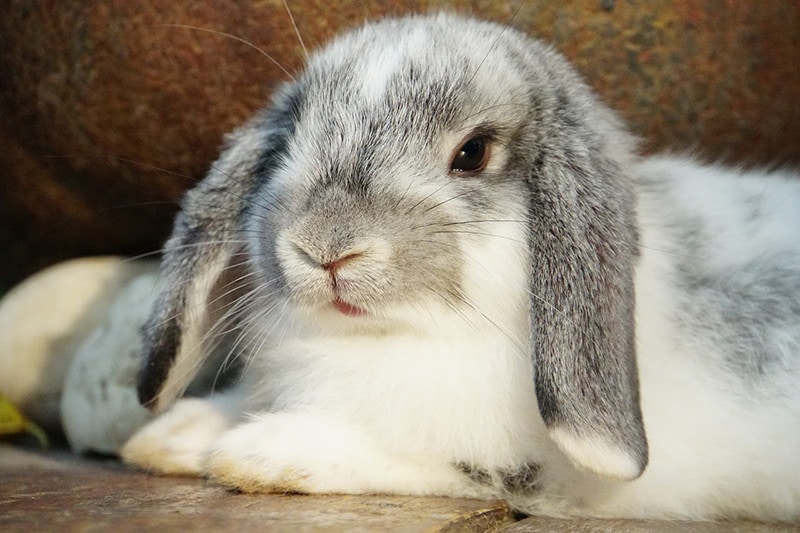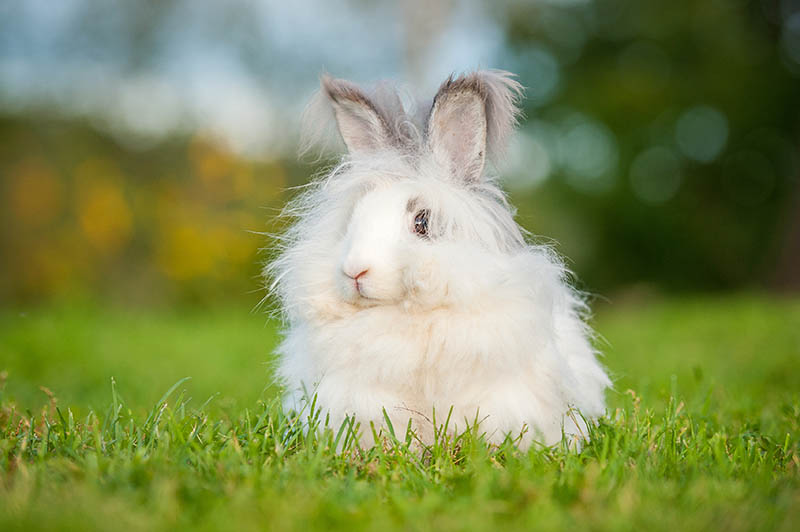Florida White Rabbit Breed Info: Pictures, Temperament & Traits

Updated on
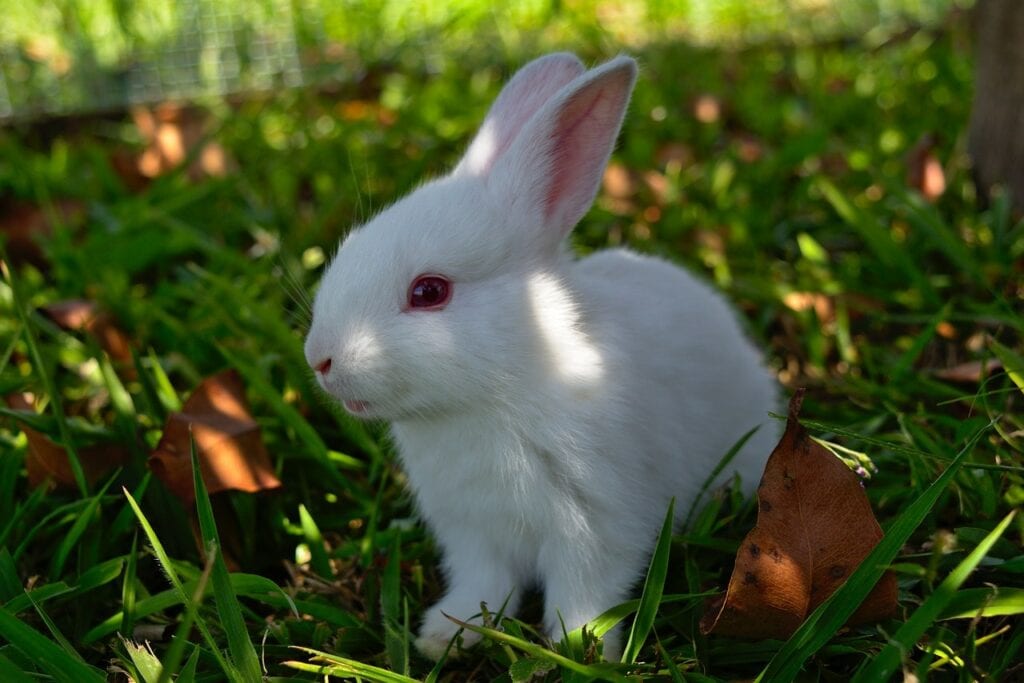
Click to Skip Ahead
If you’re looking for a cute and cuddly pet that’s easy to care for, look no further than the Florida White rabbit. With their pure white fur and adorable floppy ears, these rabbits make great pets for families and individuals alike. But there’s more to these fluffy creatures than just their good looks. The Florida White rabbit has a fascinating history, unique traits, and specific care requirements that every potential owner should know about.
| Size: | Dwarf |
| Weight: | 4–6 pounds |
| Lifespan: | 5–8 years |
| Similar Breeds: | Mini Plush Lop, Jersey Wooly, Lionhead, Miniature Cashmere Lop, Netherland Dwarf, and English Angora |
| Suitable for: | New pet or rabbit owners; owners looking for an easygoing pet that requires little upkeep |
| Temperament: | Spunky, friendly, adaptable |
The Florida White Rabbit was first bred in the 1960s as a laboratory animal. Researchers wanted to create a rabbit that was easy to handle and would produce consistent results in experiments. They crossed a white New Zealand rabbit with a Chinchilla rabbit to create the Florida White rabbit. The breed was named after the state where it was developed.
But while the rabbit was originally bred for laboratory use, it soon became popular as a show rabbit and pet, thanks to its unique albino appearance (they have all-white fur and pink eyes). The ARBA (American Rabbit Breeders Association recognized the breed in 1967, and it has since become a favorite among rabbit enthusiasts. Why? Because they’re relaxed, gentle, and relatively easygoing bunnies that are easy (and fun) to own. So, they’re a popular choice for families and individuals who want a gentle, low-maintenance pet.
Florida White Rabbit Breed Characteristics
 How Much Do These Rabbits Cost?
How Much Do These Rabbits Cost?
The cost of a Florida White rabbit may vary depending on several factors such as age, gender, and general availability in the area. Generally, the average cost of a Florida White rabbit ranges from $30 to $100, with some breeders charging more for show-quality rabbits.
When buying a Florida White rabbit, it’s essential to consider the source. Reputable breeders often charge higher prices for their rabbits, but they provide better quality and healthier animals. It’s also important to consider the rabbit’s age and gender, as younger rabbits tend to be more expensive than older ones, and females are generally more expensive than males.
Moreover, the cost of owning one of these rabbits goes beyond the initial purchase price. Potential owners should also consider the expenses for housing, food, medical care, and other supplies. These costs may vary depending on the owner’s location and lifestyle.
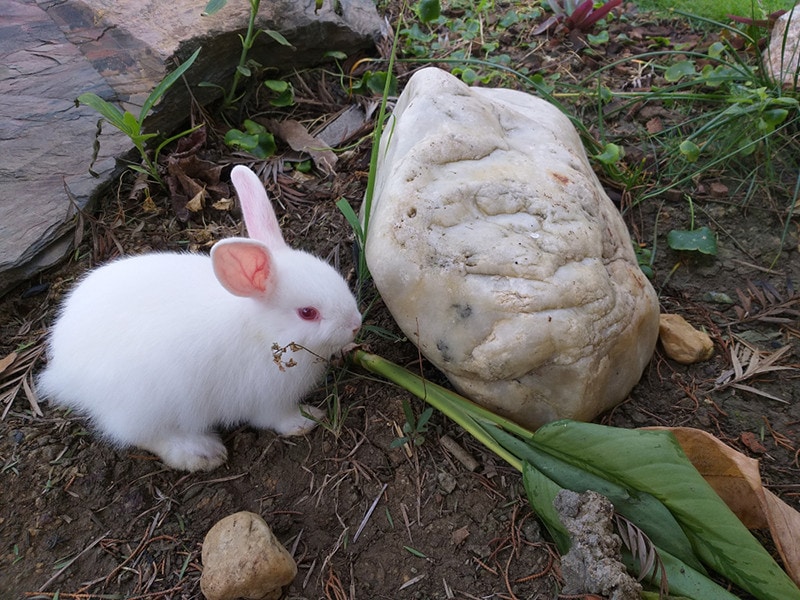
Temperament & Intelligence of the Florida White Rabbit
Do These Rabbits Make Good Pets? 👪
They do, actually. One of the main reasons why Florida White rabbits make good pets is because they’re generally very docile and easy to handle (and they’re really small). They enjoy human interaction and are often quite social, which makes them a great choice for families with children or for individuals who are looking for more of a companion animal.
Another benefit of owning a Florida White rabbit is that they’re relatively low maintenance. They don’t require a lot of space at all, and their diet consists mainly of hay, vegetables, and pellets. They also don’t need to be bathed often, as they’re able to keep themselves clean by grooming themselves.
That being stated, it’s important to note that owning any pet requires a certain level of commitment and responsibility. If you’re considering bringing a Florida White rabbit into your home, be sure that you have the time and resources to properly care for them. This includes providing them with a healthy diet, regular exercise, and veterinary care when necessary. Florida White rabbits can make wonderful pets for the right person.
Does This Rabbit Get Along With Other Pets?
The answer to this question isn’t straightforward and depends on the temperament of the other pets in the household. In general, rabbits are prey animals and may feel threatened by the presence of other animals, particularly those that are larger than them. So, to say, it’s essential to supervise any interactions between rabbits and other pets, especially dogs and cats.
However, with proper socialization and training, yes, it’s totally possible for Florida White rabbits to get along with other pets. Introducing them slowly and gradually is crucial to ensure that they don’t feel overwhelmed or frightened. Providing each pet with their own space and resources can also prevent any conflicts from arising.
Things to Know When Owning a Florida White Rabbit:
Food & Diet Requirements 🥕
In general, these small rabbits require a diet that is high in fiber and low in fat. The foundation of their diet should consist of hay, which provides much-needed fiber to keep their digestive system working properly. Timothy hay (a perennial grass) is a common choice, but other types of hay such as oat or alfalfa hay can also be fed in moderation. In addition to hay, Florida White rabbits should be provided with fresh vegetables such as kale, spinach, and carrots. These vegetables provide essential vitamins and minerals that are necessary for their overall health. Pelleted rabbit food can also be provided in moderation but should not be the sole source of nutrition.
It’s best to avoid feeding White Florida rabbits foods that are high in sugar or fat, such as fruit or processed treats. These types of foods can lead to obesity and other health issues in rabbits. Instead, focus on providing them with a balanced diet that meets their nutritional needs.
And of course, like most animals, it’s also important to provide Florida White rabbits with fresh water at all times. Their water should be changed daily and provided in a clean dish or drip bottle that is free from contaminants.
Habitat & Hutch Requirements 🏠
It’s important to create a suitable habitat for your rabbit to thrive in, and this includes providing them with a comfortable hutch that meets their basic needs.
When designing a Florida White rabbit’s habitat, the first thing you’ll want to consider is their living space – which is usually a hutch. The hutch should be spacious enough for the rabbit to move around freely and engage in natural behaviors, such as hopping and stretching. The recommended minimum size for a White Florida rabbit hutch is 4 feet long by 2 feet wide by 2 feet high. However, providing more space is always better, so if you have room, consider going larger.
In addition to size, the hutch should be designed for comfort and safety. So, it should have a solid floor that is easy to clean and disinfect, as well as good ventilation to prevent the buildup of ammonia and other harmful gasses. The hutch should also have secure doors and wire mesh to protect the rabbit from predators and ensure they don’t escape.
Also, be sure to provide your rabbit with opportunities for exercise and mental stimulation. This can be achieved through toys, such as tunnels and chew blocks, as well as supervised playtime outside of the hutch. Just make sure your rabbit is supervised at all times and kept away from potential hazards like toxic plants or other animals (if you have any, that is).
Exercise & Sleeping Needs 🐇
Florida White rabbits are energetic and active, so be sure to provide them with plenty of opportunities for exercise and playtime. As mentioned earlier, a spacious living area with ample room to run, jump, and play is ideal for these rabbits. Additionally, providing them with toys and play structures can help keep these small bunnies entertained and quite engaged.
And when it comes to sleeping, Florida White rabbits typically need between 8–10 hours of uninterrupted sleep each day. So, try to create a quiet and dark sleeping environment for your rabbit, as they’re sensitive to noise and light disturbances. Providing a cozy bed or hiding spot can also help your rabbit feel safe and secure while they sleep.
Remember that every rabbit is unique, and their exercise and sleeping needs may vary based on factors such as age, health, and personality. Observing your rabbit’s behavior and adjusting their environment accordingly can help ensure that they’re getting the exercise and rest they need to thrive.
Training 🥎
Like any other animal, training a Florida White rabbit requires patience, consistency, and just a good understanding of their behavior and needs – which can be learned as you spend more time with your rabbit. Here are some tips to keep in mind when training these bunnies.
Stay Positive
One of the first things to keep in mind when training a Florida White rabbit is to always use positive reinforcement. This means rewarding your rabbit with treats, praise, or affection when they exhibit the desired behavior. Punishing or scolding your rabbit can be counterproductive and may cause them to become fearful or aggressive.
Train Them Young
Another important tip is to start training your rabbit early. The earlier you start training your rabbit, the easier it will be to establish good habits and behaviors. It is recommended to begin training your rabbit as soon as they are old enough to leave their mother, which is usually around 8 weeks of age.
Create a Schedule and Stick to It
Consistency is also crucial when training one of these rabbits. So, make sure to always use the same commands and gestures when teaching your rabbit new behaviors. Also, make sure to keep to a schedule and keep sessions to 5–15 minutes max. This will help them understand what is expected of them and make it easier for them to remember the desired behavior.
Note Natural Instincts
When training your rabbit, it really helps to keep in mind their natural behavior and instincts. For example, rabbits are prey animals and are naturally cautious of new environments or sudden movements – they’re a tad skittish. So, introduce new experiences slowly and gradually to avoid overwhelming your rabbit.
Encourage Mental Stimulation
Try to provide plenty of enrichment and stimulation for your Florida White rabbit. This can include toys, tunnels, and obstacles that encourage physical activity and exploration. A well-stimulated rabbit is less likely to exhibit destructive or undesirable behaviors – it also helps them develop mentally and keeps their brains sharp.
Grooming ✂️
These adorable rabbits have a beautiful white coat that requires proper care to keep it looking its best. Here are some tips for grooming your Florida White rabbit.
Brush
Firstly, you should brush your rabbit’s coat regularly to prevent matting and tangling. Use a soft-bristled brush or a comb to gently remove any tangles or knots in their fur. Be sure to brush in the direction of their hair growth to avoid pulling on their skin. You can use slicker brushes and de-tangling brushes that are designed for dogs (and cats) on these rabbits. Check out Chewy and Amazon for the best prices (they range from about $7 to $15). Also, you should clean your rabbit’s ears regularly to prevent infections (weekly will suffice). Use a cotton ball or slightly damp cloth to gently wipe away any dirt or debris from their ears.
Nail Trimming
Be sure to trim your rabbit’s nails about every 4 to 6 weeks. If their nails become overgrown, they can cause pain and discomfort for your rabbit, so it’s essential to keep them trimmed. You can use nail clippers designed for small animals and be sure to avoid cutting into them too low, which can damage the nerves of the quick. Note that a groomer can also perform this for you.
Bathing
You really shouldn’t bathe your rabbit unless they are especially dirty or smelly. Rabbits basically clean themselves. But if you do, use a mild shampoo designed for small animals. Fill a sink or bathtub with warm water and place your rabbit inside. Gently massage the shampoo into their fur and rinse thoroughly with clean water. Be sure to dry them off completely with a towel or hair dryer set on low heat. Note that rabbits don’t bathe in the wild so this process may give them some anxiety – be prepared for an agitated bunny.
Lifespan and Health Conditions 🏥
As with all animals, the lifespan of the Florida White rabbit can vary depending on a number of factors. On average, these rabbits can live anywhere from 5 to 8 years. However, with proper care and attention, some Florida White rabbits have been known to live up to 10 years or more.
- Dental disease
- GI stasis
- Respiratory infections
GI Stasis
One of the most common serious health conditions in Florida White rabbits is gastrointestinal stasis or “GI stasis.” This condition occurs when the rabbit’s digestive system slows down or stops working altogether, leading to a buildup of gas and toxins in the intestines. GI stasis can be caused by a variety of factors, including a poor diet, dehydration, stress, lack of exercise, and dental problems. Signs of GI stasis include a lack of appetite, lethargy, decreased fecal output, and abdominal pain. If left untreated, GI stasis can lead to severe complications such as liver damage, sepsis, and death. Treatment usually involves a combination of fluid therapy, pain management, dietary changes, and bowel motility drugs.
Respiratory Infections
Respiratory infections are another common serious health condition in these dwarf rabbis. These infections can be caused by bacteria, viruses, or fungi and can cause problems such as sneezing, coughing, wheezing, and nasal discharge. Respiratory infections can be highly contagious and can quickly spread to other rabbits, so it’s best to isolate your rabbit and practice good hygiene. Treatment for respiratory infections may include antibiotics, nebulization therapy, and supportive care such as fluid therapy and steam inhalation.
Dental Disease
Another common serious health condition in Florida White rabbits is dental disease. Rabbits have constantly growing teeth that need to be worn down by chewing on tough fibrous foods such as hay and grass. However, if a rabbit’s diet is too low in fiber or if their teeth are misaligned or overgrown, it can lead to dental problems such as overgrown incisors or molars, abscesses, and tooth root elongation. Signs of dental disease include drooling, difficulty eating or drinking, weight loss, and facial swelling. Treatment for dental disease may involve trimming or filing down the teeth under anesthesia, antibiotics to treat any infections, and dietary changes to prevent further dental problems.
Male vs Female
One of the most noticeable differences between male and female Florida White rabbits is their size. Male rabbits, also known as bucks, tend to be larger and heavier than females, or does. Bucks can weigh up to 6 pounds, while does typically weigh between 4–5 pounds.
Another difference is their physical appearance. Bucks often have a broader head and shoulders, as well as thicker necks. They also have a small, round genital opening, while does have a slit-like opening. Additionally, bucks may have visible testicles, especially when they are sexually mature.
One of the most significant differences between male and female Florida White rabbits is their reproductive biology. Does can become sexually mature as early as 4 months old and can have litters of up to 8 kits at a time. Bucks, on the other hand, are capable of breeding from around 3 months old and can mate with multiple does.
Behaviorally, the male and female rabbits can also differ somewhat. Bucks can be a bit more territorial and aggressive, particularly towards other males – so be aware of this if you plan to have multiple rabbits. They may also be more prone to spraying urine to mark their territory. However, both male and female rabbits can be friendly and affectionate with their owners, given proper socialization and care – and space.
The 3 Little-Known Facts About Florida White Rabbit
1. They have a pure white coat
As their name suggests, Florida White Rabbits have a pure white coat that is soft and super plush to the touch. This makes them a favorite among pet owners who love to cuddle with these furry bunnies.
2. They’re a fairly young breed
The Florida White Rabbit is actually a relatively new breed that was first developed in the 1960s by crossing Dutch and New Zealand White rabbits. Despite their young age, they have quickly gained popularity among rabbit enthusiasts around the world.
3. They’re great for meat production
Yes, not everyone purchases these rabbits as pets. One of the reasons why the Florida White Rabbit was developed was for its excellent meat production qualities. They’re known for their tender, flavorful meat and are often used in commercial rabbitries for this purpose.
Final Thoughts
Florida white rabbits are friendly, easy to care for, and can provide years of companionship and joy. One common misconception is that rabbits are good pets for children. While these docile rabbits can be great pets for families, they require gentle handling and supervision to prevent injury or stress. Children should be taught how to interact with rabbits in a safe and respectful manner.
If you’re interested in getting a Florida White rabbit as a pet, there are several places to look for them. Local pet stores may have rabbits for sale, or you can search online for breeders or rescue organizations that specialize in rabbits. With proper care and attention, Florida White rabbits can make lovely and rewarding pets or valuable additions to any farm or homestead.
- Related Read: White Rabbit Breeds
Featured Image Credit to: Ronald Plett, Pixabay
 How Much Do These Rabbits Cost?
How Much Do These Rabbits Cost?
